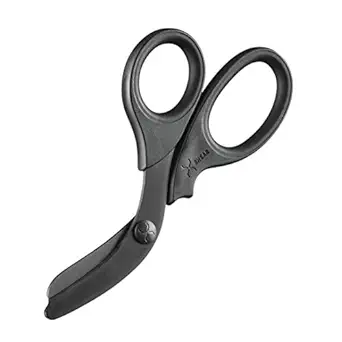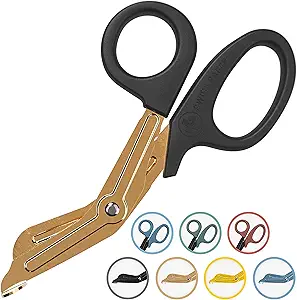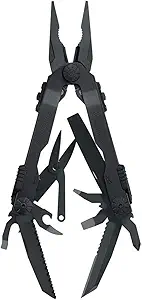Trauma Shears Buying Guide: How to Choose the Best Medical Shears for Emergency Responders, Tactical Use, and More
Overview
Trauma shears are an essential tool for emergency responders, medical professionals, and anyone who needs to quickly and safely cut through clothing, seatbelts, leather, and other materials. With so many options on the market, it can be tough to know which trauma shears are the best fit for your needs. In this buying guide, we'll cover the different types of trauma shears, key considerations to keep in mind when shopping, important features to look for, typical prices, tips for using and maintaining your shears, and frequently asked questions.
Types
There are several types of trauma shears on the market, including:
1. Standard trauma shears - These are the most common type of medical shears, featuring stainless steel blades with a serrated edge and blunt tip. They can cut through clothing, bandages, and other soft materials.
2. Tactical trauma shears - These are designed for use in high-pressure situations, such as search and rescue missions or combat. They often feature additional features such as a glass breaker, oxygen tank wrench, or ruler.
3. Heavy-duty trauma shears - These are designed for cutting through tougher materials such as leather, seatbelts, and rope. They often have longer blades and more ergonomic handles.
Key Considerations
When shopping for trauma shears, consider the following factors:
1. Blade quality - Look for high-quality stainless steel blades that are sharp and durable.
2. Handle comfort - Choose a pair of shears with comfortable, ergonomic handles that won't cause hand fatigue during use.
3. Safety features - Some shears have safety features such as a locking mechanism or rounded tip to prevent accidental injury.
4. Size and weight - Consider the size and weight of the shears, as well as the length of the blades, to ensure they are comfortable to use and carry.
Features
Some key features to look for in trauma shears include:
1. Serrated edge - A serrated edge can help the shears grip and cut through materials more easily.
2. Blunt tip - A blunt tip prevents accidental injury to the patient or user.
3. Safety lock - A safety lock keeps the shears closed when not in use, preventing accidental injury.
4. Ruler - A ruler on the shears can be helpful for measuring wounds or other objects.
Prices
Trauma shears can range in price from around $5 to $50 or more, depending on the quality and features. Standard trauma shears are typically the most affordable, while heavy-duty and tactical shears tend to be more expensive.
Tips
Here are some tips for using and maintaining your trauma shears:
1. Keep them clean - Wipe down your shears after each use to prevent rust and bacteria buildup.
2. Store them safely - Keep your shears in a safe, dry place where they won't get damaged or lost.
3. Test them regularly - Test your shears periodically to make sure they are still sharp and functional.
4. Consider buying multiple pairs - It's always a good idea to have a backup pair of shears in case one gets lost or damaged.
FAQs
Q: Can trauma shears cut through metal?
A: No, trauma shears are not designed to cut through metal. They are best used for cutting through clothing, bandages, and other soft materials.
Q: How do I clean my trauma shears?
A: Wipe down your shears with a clean, damp cloth after each use. You can also use a disinfectant wipe or alcohol pad to sanitize them.
Q: Can I sharpen my trauma shears?
A: It's generally not recommended to sharpen trauma shears yourself, as it can be difficult to maintain the correct angle and shape of the blades. Instead, consider sending them to a professional sharpening service.
Q: What's the difference between trauma shears and regular scissors?
A: Trauma shears are designed specifically for use in emergency situations, with features such as a serrated edge and blunt tip. Regular scissors are not designed for this purpose and may not be as effective or safe.
Conclusion
In conclusion, investing in a high-quality pair of trauma shears is essential for emergency responders, medical professionals, and anyone who needs to quickly and safely cut through materials. By considering the types, key considerations, features, prices, tips, and FAQs outlined in this buying guide, you can find the best trauma shears for your needs.














